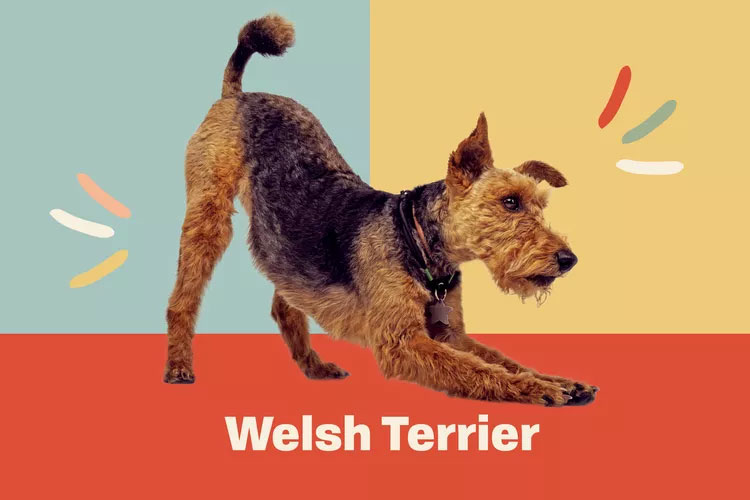
Welsh Terrier Overview
| OFFICIAL NAME | Welsh Terrier |
| COMMON NAME | Welsh Terrier |
| PET HEIGHT | 14 to 15 inches |
| PET WEIGHT | 20 to 22 pounds |
| LIFESPAN | 12 to 15 years |
| GOOD WITH | children, dogs, families |
| TEMPERAMENT | friendly, outgoing, playful |
| INTELLIGENCE | medium |
| SHEDDING AMOUNT | infrequent |
| EXERCISE NEEDS | high |
| ENERGY LEVEL | active |
| VOCAL LEVEL | frequent |
| DROOL AMOUNT | low |
| BREED GROUP | terrier |
| BREED SIZE | small (0-25 lbs.) |
| COAT LENGTH | medium, wiry |
| COLORS | black, brown / chocolate / liver |
| PATTERNS | bicolor, black and tan, saddle / blanket |
| OTHER TRAITS | high prey drive, requires lots of grooming, strong loyalty tendencies |
As one of only two terrier breeds that originated in Wales (the second being the Sealyham terrier), Welsh terriers were once common working dogs. Now considered a rare breed, if you're lucky to know a Welsh terrier, you know there's never a dull moment with him by your side.
Appearance
The Welsh terrier shares a resemblance to his terrier cousins—particularly the Lakeland terrier and Airedale terrier. Weighing 20–22 pounds on average with a height between 14–15.5 inches, they are a bit larger than Lakeland terriers and smaller than Airedale terriers.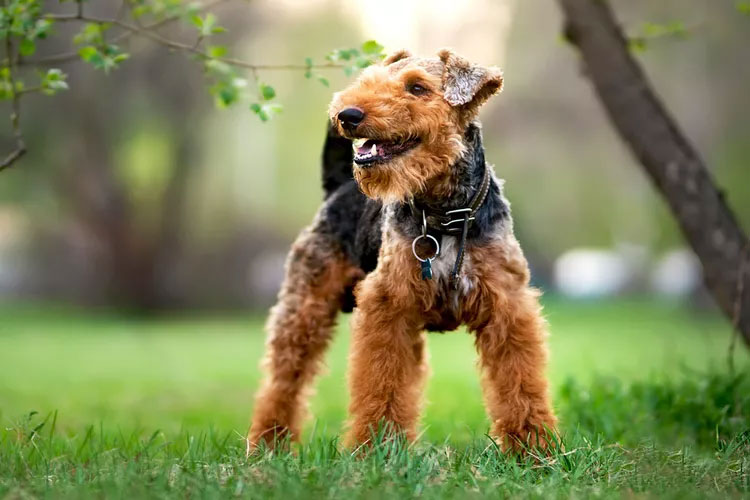
The Welsh terrier is recognizable thanks to his wiry coat that makes him look adorably scruffy and oh-so-cuddly. They have a trademark scruff around their muzzle, giving the illusion of a beard. Though adults are black and tan, Welsh terrier puppies are born almost completely black. As they grow, their black fur becomes the saddle coloring in their coat.
Welshies have a thick double coat; their undercoat tends to be shorter than the topcoat and acts as insulation to help keep them warm during winters and cool during the summer. But despite their ample fur, Welsh terriers don't shed much.
Temperament
You could say that the Welsh terrier is a little Energizer Bunny—cute, compact, cuddly, and spry. Welsh terriers were originally bred as working dogs who would help protect farmland or aid in hunting trips by locating and chasing prey. This high prey drive has not faded away over time, so it's natural for Welsh terriers to want to chase small critters like lizards, squirrels, and cats. With this natural and strong impulse to chase, the Welsh Terrier Club of America (WTCA) recommends never letting your Welsh terrier roam off-leash in an unfenced area—no matter how well-trained he is.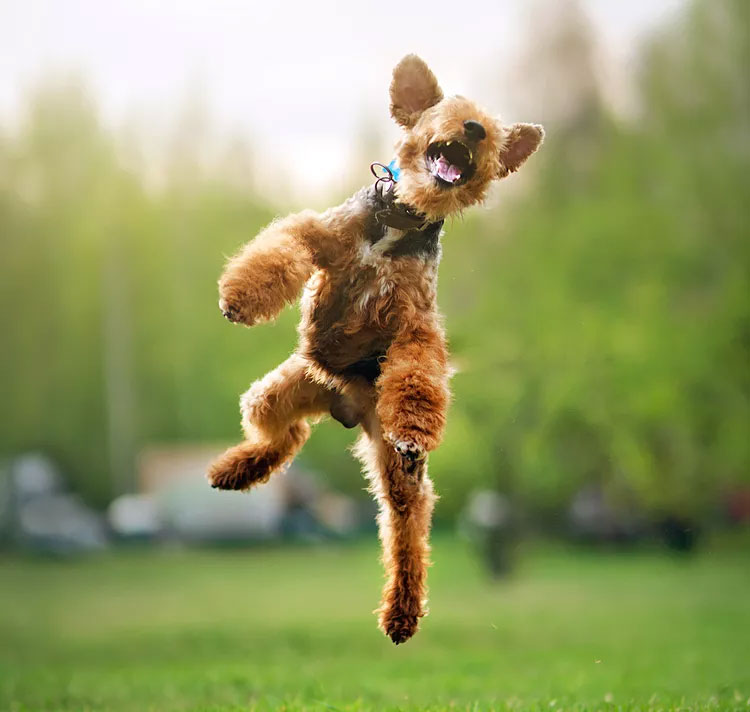
Because the Welsh terrier is a fairly intelligent breed, you'll need to work out his brain along with his body. Giving him mental stimulation can be as simple as allowing him to linger and sniff new smells on walks (a "sniffari," if you will) or giving him puzzle toys to play with.
"As with other terriers, Welsh terriers are strong-willed, tenacious, and confident," says Linda Simon, MVB, MRCVS, consulting veterinarian at FiveBarks. "They can be boisterous to say the least—always on the lookout for something to do. They need plenty of mental and physical stimulation. If not provided, these dogs can be prone to behavioral issues. Excessive barking, garden digging, and furniture chewing can all quickly develop within this breed if their needs aren't met."
With proper mental and physical exercise, the Welsh terrier can be calm and affectionate at home. A tired Welshie will love a good snuggle to end the day!
Living Needs
Ideally, a Welsh terrier would have access to a large fenced-in yard to run around in, but Welsh terriers are adaptable and can adjust to small-space living. If you live in an apartment or condo, it's critical to take your pup on daily long walks or trips to a nearby dog park. As long as you can provide the physical exercise and attention that these pups need, you should be golden.Along with their natural desire to chase, Welsh terriers are also known for digging. Don't leave him unsupervised in a fenced yard for long periods of time, as he may be inclined to dig his way out—especially if he is bored and has a lot of pent-up energy. Instead, give him a spot in the yard, like a sandbox, where he is allowed to dig.
Highly energetic and intelligent dogs usually don't fare well on their own for long periods of time, and Welsh terriers are no different. If you're often away from home—more than four to six hours at a time on a regular basis—you may want to arrange for a dog walker to come while you're away. Welsh terriers love your company, and if they're stuck inside without it they can easily become bored and may cause some trouble at home. By being proactive and fulfilling this breed's needs, you can ensure a happy and healthy home for all.
As outgoing, social, and playful pups, the Welsh terrier does well in a household with children.
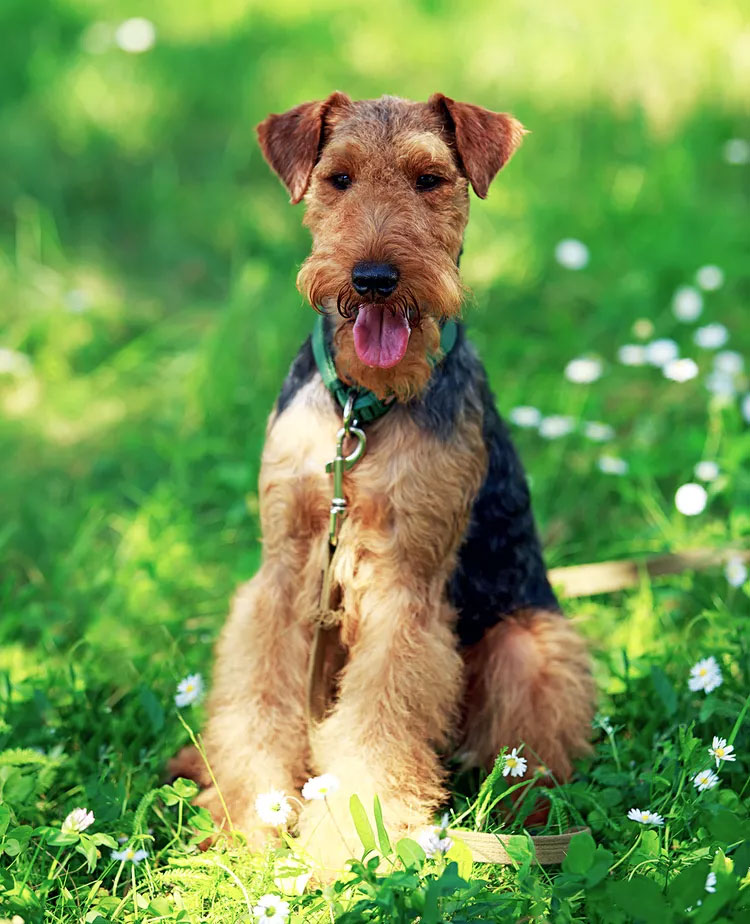
"Welsh terriers are cheerful, friendly dogs who rarely meet a stranger in life," says Michelle Burch, DVM at Safe Hounds Pet Insurance. "Due to their friendliness, they are an excellent choice of dog for families with children and other dogs."
But because of their high prey drive, Burch says, Welsh terriers might not do well in a home with cats or other small pets.
"To ensure they get along well with other animals and people, provide plenty of positive socialization experiences during their puppyhood," Simon says. "Consistency and patience are key."
Care
The Welsh terrier resembles a huggable teddy bear with his cute, wiry coat—but that cuteness takes some work to maintain! It's important to brush your Welsh terrier's coat at least once a week to prevent matting. But because their fur is coarse, they won't need frequent baths. In fact, frequent baths can actually cause his skin to dry out, so it is recommended to bathe your Welsh terrier pup about every three months. But if your pup finds his way into a puddle of mud, you might want to slather him in doggy shampoo ASAP.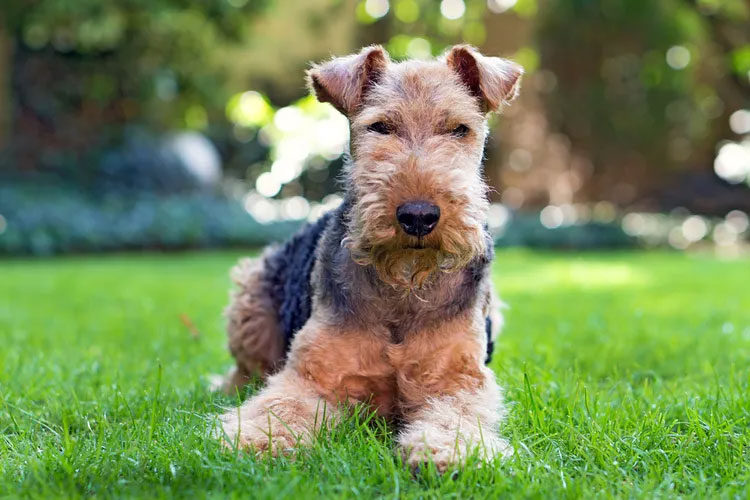
After a bath, Welsh terriers require hand-stripping, which is a grooming process that removes dead hairs from the coat by hand instead of clippers. Hand stripping can be intimidating for many owners, so you might want to find a groomer who can give your pup a bath-and-stripping spa day.
Along with proper grooming, a consistent exercise routine will keep your Welshie happy. Spunky Welsh terriers should get at least one hour of exercise every day, though 90 minutes to two hours is ideal.
"Do not neglect the exercise requirements of this energetic dog," Simon says. "They need a minimum of 90 minutes of exercise each day. Try to keep things varied and bring them on a range of walking and hiking routes. They also appreciate the opportunity to swim, hunt, and scent."
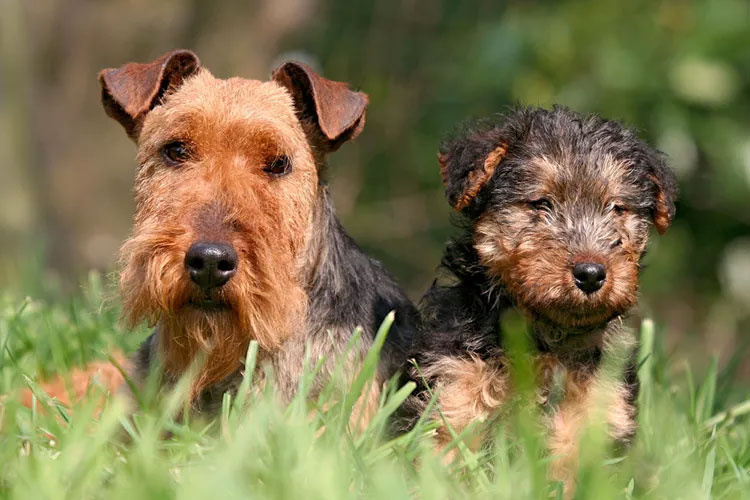
Like all dogs, Welsh terriers respond well to positive reinforcement training. Special attention needs to be given to teach your Welshie when it is and isn't necessary to bark, according to the WTCA, especially if you live in a noisy city. This pup can be willful, so training a Welsh terrier needs to be consistent. Patience is key to success.
Health
Welsh terriers are a sturdy, rugged breed and not prone to many health issues. They generally live between 12–15 years but may develop health issues in their later years."Welsh terriers can be prone to a few inherited diseases," Burch says. "Primary lens luxation (PLL) is an inheritable disease in which the lens of the eye spontaneously luxates (dislocates). While lens luxation is not painful, the resulting inflammation and glaucoma are excruciating and can lead to blindness."
Other common conditions to be aware of include hip dysplasia, keratoconjunctivitis sicca (when the eye's tear glands stop producing tears), and contact allergies.
History
It's difficult to say when the first Welsh terriers were bred. According to the WTCA, a 1450 poem written by a Welshman seems to describe the working Welsh terrier and may be the first recorded depiction of the dogs.These early Welshies were used by farmers to keep foxes, badgers, rodents, and other vermin off their land, according to the WTCA. By the 1700s, hunters were breeding Welsh terriers to hunt foxes alongside hound dogs.
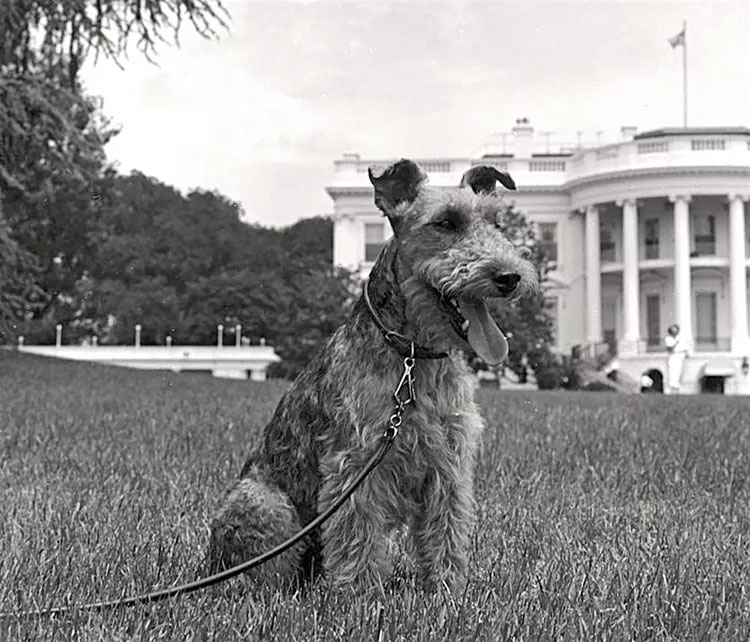
The Welsh terrier was officially recognized by the London Kennel Club in 1887. The pups traveled across the pond to the U.S. in 1885 and the American Kennel Club recognized the breed in 1888. The Welsh Terrier Club of America was later founded in 1900.
Fun Facts
When President John F. Kennedy moved his family into the White House, he brought along a Welshie named Charlie.You can spot a Welsh terrier in the animated movie Balto III: Wings of Change. In the movie, Mel is a high-energy Welsh terrier that lives at the post office and constantly worries about the mail dogs when they're late.
Welshies know how to dish the sass and are well-known for giving the "stink-eye" when things don't go their way. To poke fun, the Welsh Terrier Rescue actually holds an annual fundraiser in Greenville, S.C., called the Stink Eye Walk and Social.